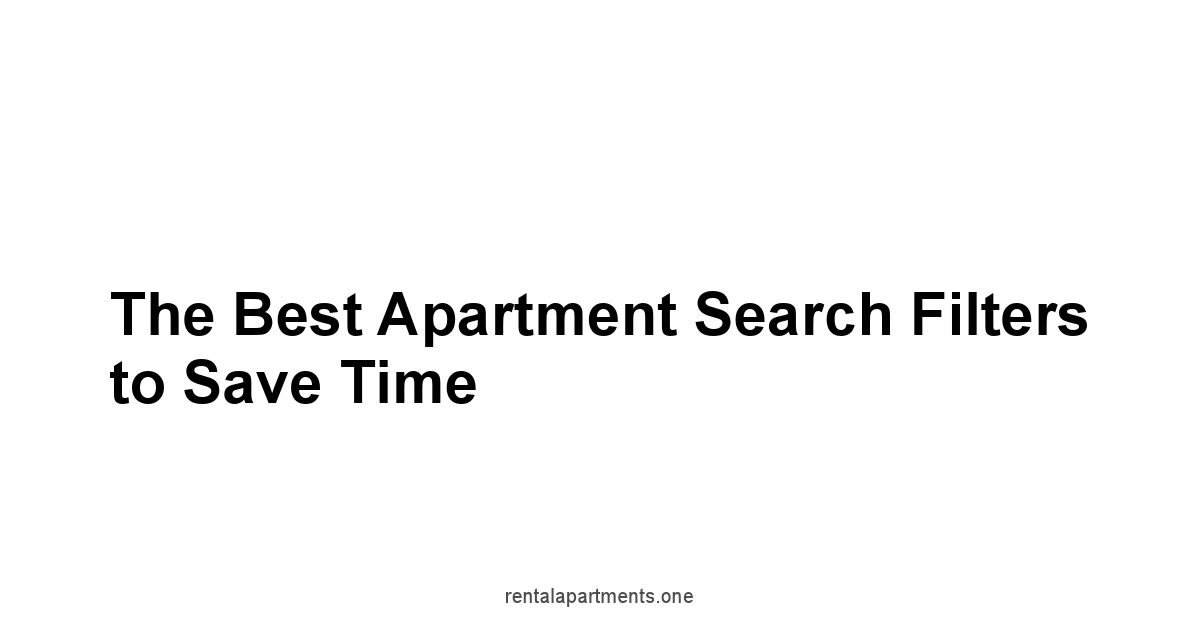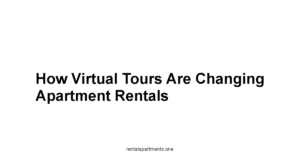Filtering by location, budget, and space requirements is the first step, ensuring you sift through countless listings, to find the perfect apartment.
The right place isn’t just about four walls, it’s about the neighborhood that surrounds it, the money that you’re spending, and the number of rooms that fit your lifestyle.
Location matters, it dictates your daily rhythm, from the feel of the streets to the ease of your commute.
A study revealed that 75% of renters prioritize neighborhood safety and convenience over apartment features, emphasizing the significance of choosing the right location.
It’s not just about the building, but the community you’ll call home, the neighborhood that fits your unique needs and priorities and keeps you safe.
Defining what is ideal for you, requires thought.
It’s about deciding what makes a place feel like home.
Do you need a quiet street, or a lively downtown area? Are you looking for local cafes, shops, or parks? These aren’t just preferences, they’re the elements that create a space where you feel like you belong.
Consider these points:
- Create a list of the features that you need the most
- Think about your lifestyle and what is important to you.
- Check the crime statistics and other safety features in an area
- Visit the area at different times during the day
- Talk to the neighbors if you have the chance.
| Feature | Importance | Why it matters |
|---|---|---|
| Noise Level | High | Impacts daily life, rest, and work |
| Local Amenities | High | Determines convenience for daily tasks, activities, and access to local services |
| Community Feel | Medium | Affects your sense of belonging and social well-being |
| Safety | High | Influences personal security and peace of mind |
| Accessibility | Medium | Determines ease of travel, access to public transport, and parking |
| Aesthetic Appeal | Medium | Impacts how you feel about where you live and your surroundings |
Proximity to work and leisure is vital, and it affects your lifestyle, because your commute and your free time greatly impact the quality of your life.
You want a place that places you in the middle of what is important to you, so take your time to consider your commute, the proximity to leisure spots, and find the balance that works for you.
Also consider how important it is to live close to places you frequent like restaurants, cafes, and shops.
If you have kids, the school district becomes a major factor.
It’s more than the academic score, it’s about the quality of education, the resources that are available, and the environment that shapes your children’s future. Make sure to do your research.
- Check the school ratings
- Take a tour of the schools
- Look at after-school activities
- Consider the school bus routes
- Make sure it’s a family-friendly area.
| Factor | Description |
|---|---|
| School Performance | Standardized test scores, graduation rates, and overall academic reputation. |
| School Resources | Availability of programs like art, podcast, sports, and special education. |
| Class Sizes | Student-teacher ratios and classroom size. |
| School Safety | Measures and programs in place to ensure a safe learning environment. |
| Community Engagement | How involved are the parents and community in the school? |
| Extracurricular Activities | Variety of sports, clubs, and other after-school activities. |
| Accessibility | Distance and transportation options to and from the school. |
Your safety and ability to walk around the neighborhood is another essential element that should be considered.
You should be able to walk around without any worry, whether it’s daytime or at night. This greatly impacts the quality of life.
Make sure to check crime statistics, consider street lights, and check how well the streets are maintained, for both you and other pedestrians.
- Assess sidewalks for safety and maintance
- Check if the crosswalks are safe
- Make sure there are pedestrian signals
- Check if the street are well lit
- Make sure there are trees that provide shade
- Check the proximity to shops, cafes and other amenities.
Your budget is the backbone of your apartment search.
Setting the right price filter is key to avoiding overspending and preventing problems in the future. The price filter is a safety net.
Setting your price filter saves you time by only showing you apartments that you can realistically afford.
A rule of thumb is the 30% rule, which dictates that no more than 30% of your gross monthly income should go towards rent, however, consider all the other factors that may affect your monthly budget.
Remember to account for other costs, such as utilities, internet, parking, and renter’s insurance, as these costs will affect your monthly budget.
Here’s a simple breakdown to consider:
- Calculate your gross monthly income
- Apply the 30% rule, but adjust based on your needs
- Consider debt obligations
- Factor in other expenses
- Remember to set savings goals
- Be flexible to account for unexpected expenses.
| Expense | Monthly Cost | Notes |
|---|---|---|
| Rent | $1,500 | |
| Electricity | $80 | Can fluctuate based on usage and time of year |
| Water | $40 | Some apartments include water in rent |
| Gas | $30 | Often used for heating |
| Internet | $60 | Depends on service provider |
| Renter’s Insurance | $20 | Protects your belongings |
| Parking | $50 | If parking is not included |
| Pet Fees | $30 | Additional cost if you have pets |
| Total | $1,810 | Total monthly expenses, excluding food and personal expenditures |
Set both a minimum and maximum, this is important because you need to stay realistic, without settling for a place that is not ideal.
The number of bedrooms, bathrooms, and the square footage, are key to finding a comfortable space.
Consider your lifestyle, who you live with, and your needs.
A single person may need one room, and a family will need more, some people need an office to work, so consider all of this.
How much space you need is personal to you, and what you need should guide your choices.
Here is a guide:
1. One bedroom is ideal for singles and couples
2. Two bedrooms are good for small families
3. Three bedrooms are better for families with children
4. More than three bedrooms, for larger families or big groups.
The number of bathrooms is as important as the number of bedrooms, and this can greatly affect your living situation.
More people in the house, mean more bathrooms are needed.
Here’s a breakdown:
* One bathroom is convenient for single people or couples.
* One and a half bathrooms is convenient for families or roommates.
* Two bathrooms are ideal for families and roommates for added convenience.
* More than two bathrooms are convenient for larger families or groups.
Square footage is not just a number, but rather defines the overall size of the apartment, and should be considered in the context of your furniture, and belongings.
An open layout, a traditional layout, or a modern layout, each has its advantages, and the unique features of an apartment can contribute to your sense of belonging.
| Square Footage | Ideal For | Considerations |
|---|---|---|
| 500-700 sq ft | Single individuals, minimalist lifestyle | Limited storage, may feel cramped, best for one person. |
| 700-1000 sq ft | Couples, small families | Comfortable space, can accommodate some furniture, good for two. |
| 1000-1500 sq ft | Families with children, roommates | More room to move, extra rooms, better for families. |
| 1500+ sq ft | Large families, people who need extra space | Spacious, often includes multiple bathrooms and extra rooms. |
Amenities like in-unit laundry, designated parking, and secure entry are not just conveniences, they are necessities. They simplify daily life and reduce stress.
Shared amenities like fitness centers, pools, and community spaces, can be a big draw if you intend on using them.
If you have pets, finding a pet-friendly apartment is also key.
Check for pet fees, size limitations, or breed restrictions.
Also, consider if there are outdoor areas for your pet to roam. Your pet should also feel at home.
The lease terms you choose are also important, as they define the length and conditions of your rental agreement.
Choose wisely between short term and long term leases, based on your plans and your needs.
A lease is either a commitment or a temporary stop.
Here’s a simple breakdown of lease term lengths:
* 6-Month Lease:
* Pros: Flexibility to move sooner, good for short-term needs.
* Cons: Higher rent prices, less stability, potential for more frequent moves.
* 12-Month Lease:
* Pros: A standard option with a balance between cost and commitment, stable living situation, often more affordable than shorter terms.
* Cons: Longer commitment, may have fees to break lease.
* Longer Leases 18 Months or More:
* Pros: More predictable living situation, potential for lower rental rates, long term stability.
* Cons: Longer commitment, less flexibility to relocate, more financial liability if breaking the lease.
Be sure to read the lease renewal clauses, and if needed consider negotiating your lease terms.
Don’t be afraid to ask for better terms such as lowering rent, waiving fees, or adding amenities, as you may just get what you want.
Finally, for pet owners, finding a place that welcomes your pets is important.
Understand the pet policies, such as pet fees, deposits, and any other breed and size restrictions.
Your pet is part of the family and your place should welcome them.
You should be clear on the costs associated with owning a pet, as they may add to the monthly expenses, so budget accordingly.
Location, Location, Location: Filtering by Neighborhood
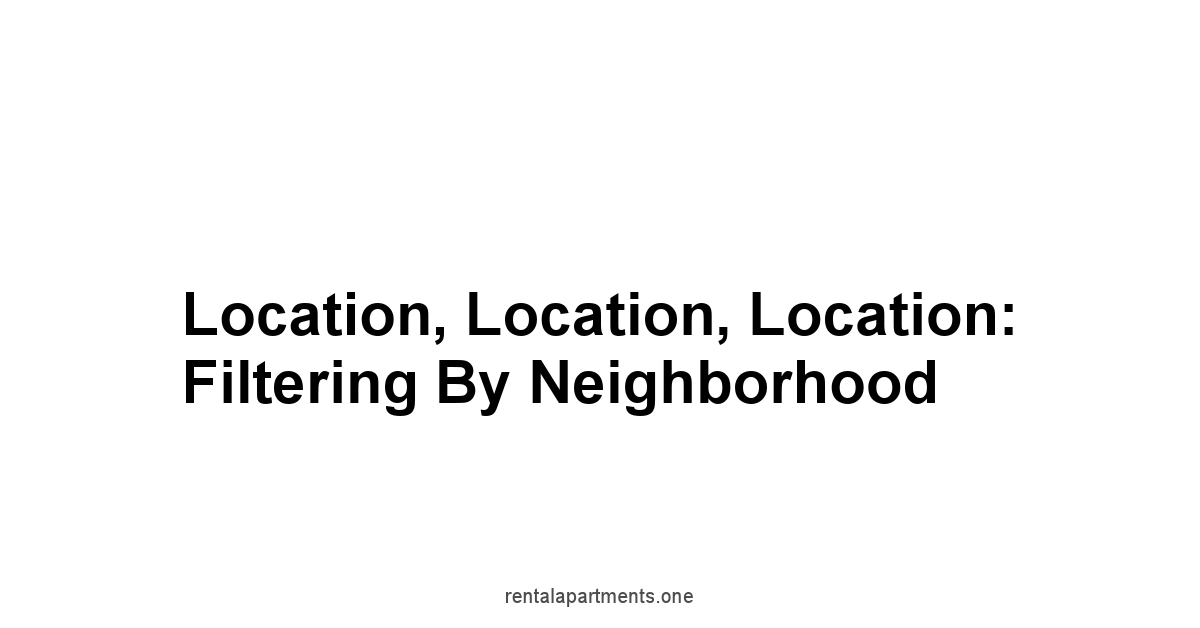
A place to live is more than just walls and a roof.
It’s the neighborhood, the feel of the streets, the people around you.
Filtering by location is the first, and perhaps the most important, step in finding the right apartment.
It sets the stage for your entire living experience.
You need to think about where you want to be and what kind of life you want to live.
It’s not just about a building, it’s about the world outside your door.
This filter isn’t just a pin on a map, it’s a definition of your daily rhythm.
You can’t just pick a place at random, you’ve got to choose the right neighborhood, where you feel at home and safe. It’s about knowing your needs, your rhythms.
Consider where you’ll spend your time, what will make you comfortable, and how your daily needs will be met.
The perfect apartment, in the wrong neighborhood, will not feel right. You need to consider all of that first.
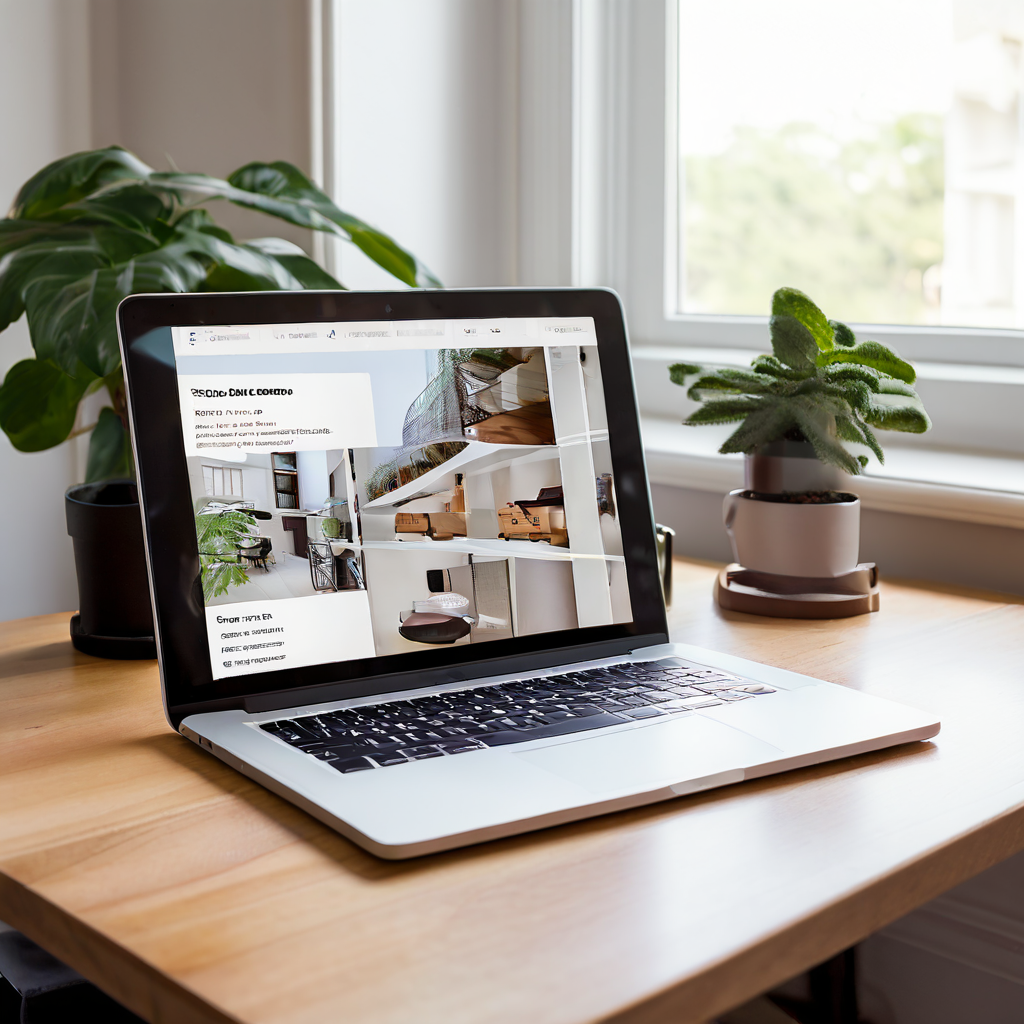
Defining Your Ideal Neighborhood
What makes a neighborhood good? Is it the quiet tree-lined streets, or the lively bustle of downtown? The answer isn’t the same for everyone.
You need to know what you’re looking for before you start looking.
This is about creating a space that feels like home, not just a place to sleep.
- List your priorities: Is it quiet or lively? Are you looking for cafes, shops, or parks within walking distance? Do you need a place with a strong sense of community?
- Consider your lifestyle: If you love the outdoors, a neighborhood with access to trails and parks is crucial. If you are a city dweller a place with public transportation is key
- Research crime statistics: Understanding the safety of a neighborhood is essential. Look for local reports or resources that provide crime data.
- Visit the neighborhood at different times: A place can feel very different during the day versus at night or on weekends.
- Talk to the neighbors: If possible, strike up a conversation with residents to get a real feel for the place.
Feature Importance Why it matters Noise Level High Impacts daily life, rest, and work Local Amenities High Determines convenience for daily tasks, activities, and access to local services Community Feel Medium Affects your sense of belonging and social well-being Safety High Influences personal security and peace of mind Accessibility Medium Determines ease of travel, access to public transport, and parking Aesthetic Appeal Medium Impacts how you feel about where you live and your surroundings
Proximity to Work and Leisure
Commute times can eat away your days.
The best spot is one that places you in the middle of the things you need and the things you enjoy.
It’s not enough to just live near work, you need to live near life.
Consider the balance between your job and your time away from it, because both matter.
A long commute can drain you, while a short one means more time doing what you want.
- Calculate travel time: Use online tools to see commute times by car, public transport, or bike. Don’t rely on estimates; test the routes yourself.
- Consider transportation options: If you don’t drive, check bus stops, train lines, and bike lanes.
- Think about your routine: How often do you need to get to work? If you work from home most of the time, your needs will be different.
- Note proximity to leisure spots: Where do you relax? What do you do for fun? Are these places nearby?
- Balance work and play: A place that has both is the most ideal choice.
Here are some key considerations:
1. Work: Is your job nearby? What’s the travel time like during rush hour?
2. Grocery Stores: Are there nearby grocery stores or markets?
3. Gyms/Fitness Centers: How close are you to a place to workout?
4. Parks and Recreation: Where can you go for some outdoor time?
5. Restaurants and Cafes: Do you like to eat out?
School Districts and Family Needs
If you have kids or planning to have them, the school district is a key factor.
A good school district can have a great impact on your children’s future.
It’s not just about test scores, it’s about the quality of education and resources that are available.
Don’t make a choice without considering your children’s needs.
Research the options available so you can choose wisely.
- Research school ratings: Check online resources that rate schools based on academic performance, student-teacher ratios, and other factors.
- Visit schools if possible: If you can, take a tour of the schools that are in your desired area.
- Consider after-school activities: See what kind of extracurricular activities are available for your children.
- Think about school bus routes: If the school isn’t within walking distance, check bus routes.
- Consider the community: Look for family-friendly areas with playgrounds and other kid-friendly amenities.
Factor Description School Performance Standardized test scores, graduation rates, and overall academic reputation. School Resources Availability of programs like art, podcast, sports, and special education. Class Sizes Student-teacher ratios and classroom size. School Safety Measures and programs in place to ensure a safe learning environment. Community Engagement How involved are the parents and community in the school? Extracurricular Activities Variety of sports, clubs, and other after-school activities. Accessibility Distance and transportation options to and from the school.
Safety and Walkability Considerations
A neighborhood’s safety and walkability are essential for your well-being.
You should be able to walk around your neighborhood at any time of day without worry.
If the streets are not safe it can affect how you feel at home.
Walkability also adds to the quality of life, it’s good for both your physical health and your sense of community.
- Check crime statistics: Use online resources to get information about crime rates in the areas you are considering.
- Visit the area at different times: A neighborhood can feel very different during the day versus at night.
- Look for street lighting: Well-lit streets enhance safety and walkability.
- Note the number of pedestrians: Do you see people walking around? Do they seem comfortable?
- Consider sidewalks and crosswalks: Are they well maintained? Are they safe for pedestrians?
- Check traffic flow: Is the traffic too fast? Are there bike lanes?
Here is how to asses an areas walkability:
- Sidewalks: Are there well-maintained sidewalks?
- Crosswalks: Are crosswalks safe and clearly marked?
- Pedestrian Signals: Are traffic signals timed for pedestrians?
- Lighting: Are streets well-lit at night?
- Street Trees: Are there trees that provide shade?
- Land Use: Are there a variety of shops, cafes, and amenities within walking distance?
Setting Your Budget: The Price Filter
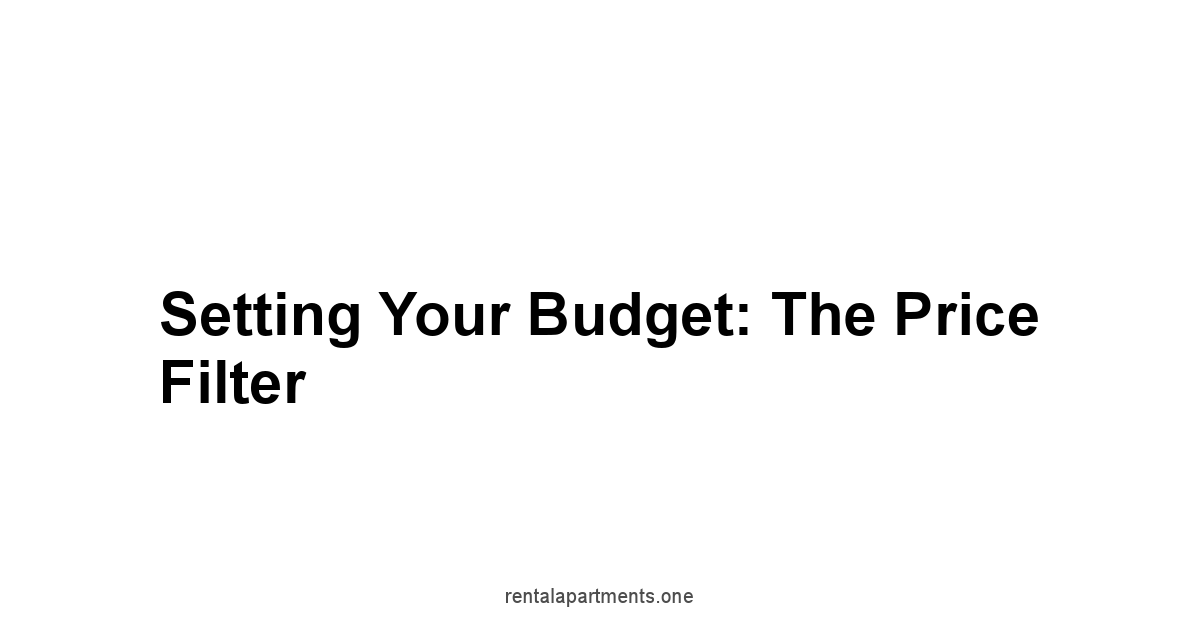
Setting the right price filter saves time and prevents heartache down the road.
It’s not just about what you want to pay, but what you can afford, and what fits comfortably within your financial life.
The price filter will narrow your options significantly, showing only the places that are realistically within reach.
It’s a key step in a process that will lead you to the right place for you.
This is where practicality meets desire.
The price filter is a safety net, it prevents you from looking at places that are out of your budget, and it helps you stay realistic, and helps you to make a sound choice.
Understanding Your Rent Range
Knowing your rent range isn’t just about the monthly rent.
It’s about understanding what portion of your income can comfortably go towards housing.
A rule of thumb is the 30% rule, where no more than 30% of your gross monthly income should go towards rent. This is just a starting point though. Your needs might differ from other people.
- Calculate your gross monthly income: This is your income before taxes and other deductions.
- Apply the 30% rule: Multiply your gross income by 0.3 to get a general rent range.
- Adjust based on your spending: Do you have significant debt? Do you have high expenses?
- Consider future income: Will your salary increase in the next year? How does this affect your budget?
- Factor in savings: It’s also important to save, not just spend. So consider putting aside some money.
- Be realistic: Don’t stretch your budget. It is better to live within your means.
Here’s a simple breakdown to consider:
- Gross Monthly Income: Your total income before any deductions.
- 30% Rule: The traditional rule that housing costs should be no more than 30% of your gross monthly income.
- Debt Obligations: Include student loans, credit card payments, car loans, etc.
- Other Expenses: Include food, transportation, entertainment, and other monthly expenses.
- Savings Goals: Consider your savings goals for the month.
- Flexibility: Leave a bit of wiggle room in your budget to cover any unexpected expenses.
Accounting for Utilities and Extra Costs
Rent isn’t the only monthly expense you have to think about.
Utilities, internet, parking, and renter’s insurance all add up, and these costs can push your monthly spending over your limit if you’re not careful.
Don’t forget these extra expenses when figuring out your budget.
These costs can vary, so doing your homework will prevent any surprises down the road.
- Estimate utility costs: Check what the average utility costs are for the apartment you’re considering.
- Account for internet and cable: Compare different plans and pricing.
- Parking costs: If you need a parking spot, factor in the monthly cost.
- Renter’s insurance: A necessary expense that protects your belongings in case of an accident.
- Pet fees: If you have a pet, include any additional pet rent or fees.
- Storage fees: If you need extra storage space, include the additional cost in your calculations.
Here’s an example of how different expenses can add up. Let’s say the base rent is $1,500.
| Expense | Monthly Cost | Notes |
| :------------------ | :----------- | :------------------------------------------------------------------- |
| Rent | $1,500 | |
| Electricity | $80 | Can fluctuate based on usage and time of year |
| Water | $40 | Some apartments include water in rent |
| Gas | $30 | Often used for heating |
| Internet | $60 | Depends on service provider |
| Renter’s Insurance | $20 | Protects your belongings |
| Parking | $50 | If parking is not included |
| Pet Fees | $30 | Additional cost if you have pets |
| Total | $1,810 | Total monthly expenses, excluding food and personal expenditures |
Setting Minimum and Maximum Price Points
Don’t just look at places within the 30% rule, set a minimum and maximum.
If you look too low, you risk ending up in an place you won’t like, If you look too high, you risk pushing your budget.
It’s about creating a filter that only shows you the best options within your financial reach.
You need to find that sweet spot that matches your needs and your budget.
- Set a realistic minimum: What is the lowest rent you’d be willing to pay?
- Set a realistic maximum: What is the highest rent you can comfortably afford?
- Avoid the temptation to stretch: It’s always better to live comfortably.
- Revisit your budget: If you’re not finding anything, reconsider your budget and adjust.
- Be flexible: The rental market can fluctuate. Be ready to adjust your search as needed.
- Keep an eye on market trends: Knowing average rental rates can help in setting reasonable price points.
Here’s why setting a minimum and maximum is important:
- Minimum: Prevents you from looking at units that are too small, not well-maintained or in less desirable areas.
- Maximum: Helps you stay within your financial means, preventing overspending on rent and other housing costs.
- Refinement: Narrows down the number of listings so you don’t have to sift through an enormous number of listings that don’t fit your budget.
- Time Saver: Helps you focus your search and saves time by eliminating options outside of your price range.
- Peace of Mind: Helps you stay relaxed and comfortable by making choices that you are comfortable with.
Room and Space: Bedrooms, Bathrooms, and Square Footage
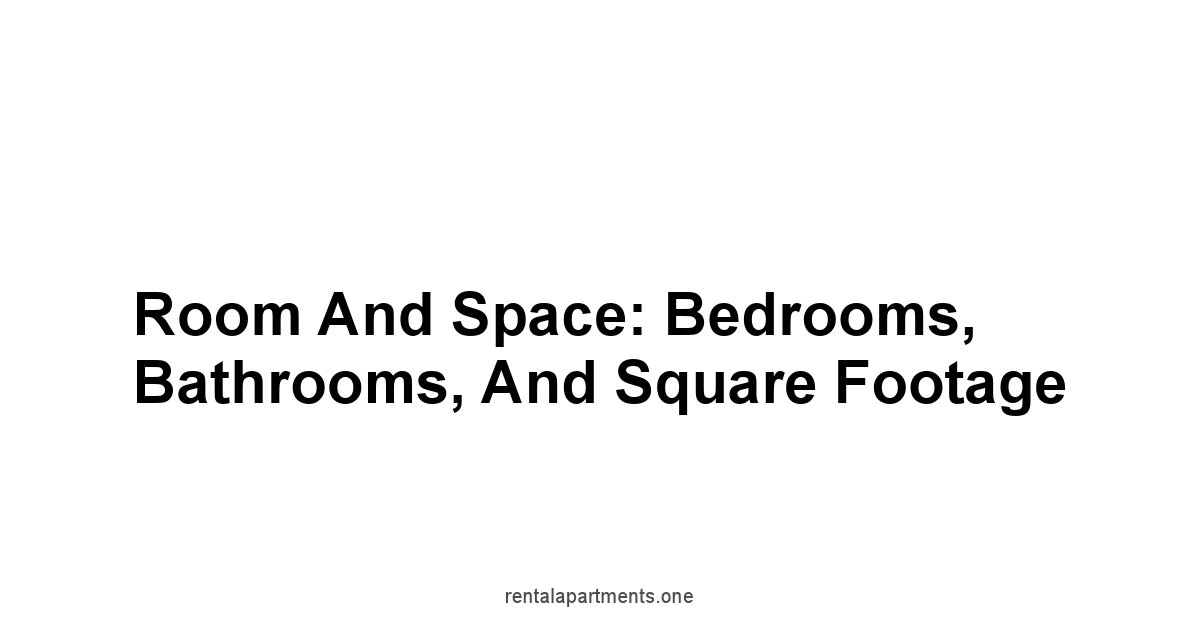
The amount of space you need is important. It impacts how comfortable you will be.
Filtering by the number of bedrooms, bathrooms, and square footage helps you find a space that suits your lifestyle.
It’s not just about having enough space, it’s about having the right kind of space, because space affects how you live, and not everyone needs the same amount. This is about finding a home that truly fits you.
How you use your space, and how much of it you need, is entirely personal.
These are practical considerations, not just about preferences. Thinking about your needs will guide your search.
Number of Bedrooms Needed
The number of bedrooms you need depends on your lifestyle, who you live with, and your needs.
It’s a primary factor when deciding on the right apartment.
A single person may need one room, a family needs more, some people even need an office to work.
So it’s important to know this when beginning your search.
Consider how you live, and who you share your space with.
- Consider your household size: If you have kids, each child may need their own room.
- Think about guests: How often do you have visitors? Do you need a guest room?
- Consider work space: Do you work from home? Do you need a home office?
- Plan for the future: Do you see your living situation changing in the next year or two?
- Balance needs and budget: More bedrooms often mean higher rent, so make sure you can afford it.
- Don’t over or under estimate: You don’t want a place too large, or too small.
Here’s a guide:
- One Bedroom: Perfect for singles, couples, or those who need a dedicated space to work.
- Two Bedrooms: Ideal for small families or couples who need a guest room or an office.
- Three Bedrooms: Suitable for families with kids, offering each child their own space or the addition of a home office.
- More than Three Bedrooms: Large families or people who want to have multiple guest rooms.

Bathrooms: One, Two, or More?
The number of bathrooms is as important as the number of bedrooms. It is another thing you have to consider. This can influence your living situation greatly.
A single bathroom can cause chaos in a house with multiple people.
This is more than just convenience, it is about practical needs.
This is especially crucial for families or people living with roommates.
- Household size: The more people, the more bathrooms you might need.
- Morning routines: If everyone is trying to use the bathroom at the same time, you may need more than one.
- Guest access: A half-bath for guests is always useful.
- Privacy needs: Separate bathrooms can provide more privacy.
- Bathroom placement: Consider where the bathroom is located in relation to the bedrooms and living space.
- Resale value: If you plan on leaving the apartment, consider how many bathrooms might affect resale.
Here’s a breakdown:
- One Bathroom: Usually in studios or small one-bedroom apartments and is convenient for single people or couples.
- One and a Half Bathrooms: Includes a full bath and a half bath and is convenient for families or roommates, or for visitors.
- Two Bathrooms: Usually in two or three bedroom apartments, ideal for families and roommates for added convenience.
- More than Two Bathrooms: Typically found in large houses, or bigger apartments, and convenient for larger families or groups.
Square Footage: How Much Space Is Enough?
Square footage defines the overall size of your apartment.
You have to consider the layout, and think about the space you need to live comfortably.
It isn’t just about having a big number, but about whether the space is practical for how you live.
The right square footage is about the balance between too much space, and too little space.
- Consider your lifestyle: Do you need a lot of room to move around? Are you okay with a smaller more intimate space?
- Think about your belongings: How much stuff do you own? Do you need extra storage space?
- Measure your furniture: Make sure the apartment can accommodate your furniture.
- Consider the layout: How the space is arranged can have a great impact on how comfortable you are in it.
- Don’t get too much space: You have to pay more for the extra space.
- Don’t settle for too little: Living in a small place can feel tight after a while.
Layout Preferences and Unique Features
The layout of an apartment and unique features often matter as much as the basic size and number of rooms.
The layout can dictate the flow of your space and your daily routine.
Features like a balcony, a fireplace or hardwood floors can also contribute to the overall feeling.
These details can make the apartment feel more like home, and they can add a little bit of comfort to your living space.
- Open concept vs. separate rooms: Which do you prefer? Think about your daily routine and how you live in your space.
- Balconies and patios: Do you enjoy outdoor space? It can add a nice touch to your space.
- Fireplaces: If you like coziness, a fireplace may be the right choice for you.
- Hardwood floors vs. carpets: Both have advantages and disadvantages. Choose what suits your lifestyle.
- Large windows and natural light: This can have a positive effect on your mood.
- Storage: Consider closet space and storage areas. How much storage do you need?
Here are some of the layout types and unique features:
- Open Layout: Usually found in studio or one bedroom apartments where the living room, dining room and kitchen flow into one another and are great for people who enjoy having an open space.
- Traditional Layout: A clear separation between rooms, which is common in multi bedroom apartments, and good for those who value privacy.
- Modern Layout: Clean, open spaces with large windows, and a more contemporary feel.
- Unique features:
- Balcony or Patio: Outdoor space to enjoy.
- Fireplace: Great for creating a cozy atmosphere.
- High Ceilings: Can make a place feel bigger and more spacious.
- Walk-in Closets: Additional storage space.
- Hardwood Floors: Easier to clean and can be more hygienic.
Amenities: What You Really Need
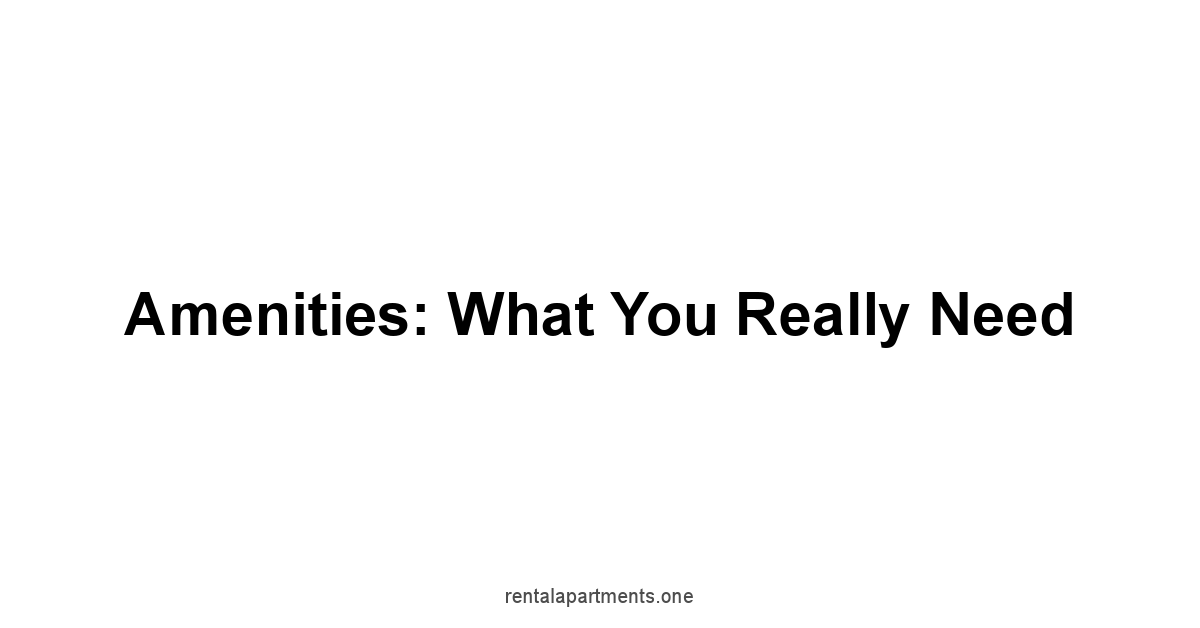
Amenities are the features and services that enhance your living experience.
They go beyond the basics and make a place comfortable.
Filtering by the right amenities will help you find a place that truly meets your needs and your preferences.
This isn’t just about the luxuries, it is also about practicalities that are important for your daily life.
You have to know what you need, and what you want, and not just settle for what is available.
Your needs may vary from other peoples, some people like a gym, others like a park, so you have to know what are your needs, and choose accordingly.
Must-Have Amenities: Laundry, Parking, and More
Certain amenities are not just conveniences, they’re necessities.
In-unit laundry, designated parking, and secure entry are features that impact your daily life. These are the amenities you should look for first.
These are the things that make your life easier and more practical. They simplify daily life and reduce stress.
- In-unit laundry vs. shared laundry: This is important to consider, based on your lifestyle.
- Covered parking vs. street parking: Consider your needs and what suits your lifestyle.
- Secure entry: A safe building means peace of mind.
- Central air or heating: These affect how comfortable you are in your home.
- Dishwasher: It can be a time saver.
- Storage space: Closets, extra storage options are important.
Here are some key amenities that many people look for:
- In-Unit Laundry: A washer and dryer in your apartment, adding convenience to your daily routine.
- Designated Parking: A guaranteed parking spot, especially important in crowded areas.
- Secure Entry: Key fob access or a doorman, enhancing safety and security.
- Central Air Conditioning/Heating: Ensuring comfort during all seasons.
- Dishwasher: A major convenience in the kitchen.
- Storage Options: Sufficient closet space or extra storage.
- High-Speed Internet Access: Necessary for remote work, or streaming movies.
- Elevator: Very important for tall buildings.
Fitness Centers, Pools, and Community Spaces
Shared amenities like gyms, pools, and community spaces can greatly impact your lifestyle, but they should not be a priority for everyone. Consider if you need those things.
If you do they can be a big draw, as they enhance your overall lifestyle.
They foster a sense of community, and promote social interaction.
- Fitness centers: If you prefer to work out at home, this may be the right option.
- Pools and hot tubs: Do you want a place to relax in the water?
- Community rooms: Great for social gatherings.
- Rooftop decks: Some of them have nice views.
- Gardens and green spaces: Some people like to be near nature.
- Consider if you need them: Not everyone needs these amenities. Do you plan to use them?
Here’s what those amenities offer:
- Fitness Centers: A convenient place to exercise, saving you gym membership costs.
- Swimming Pools: A nice spot for leisure, exercise, and socializing.
- Community Rooms: A place for events, meetings, and social gatherings.
- Rooftop Decks: A place to relax, and to get a view of the city.
- Gardens and Green Spaces: A nature respite for urban dwellers.
- Outdoor Grilling Areas: Great for summer barbecues, and social events.
- Bike Storage: Secure storage for bikes, encouraging cycling as a transportation option.
Pet-Friendly Policies and Outdoor Areas
If you have pets, or plan to get a pet, finding a pet-friendly apartment is essential. Pet policies can vary from place to place.
Be sure to be clear on any limitations, and other issues.
Also, consider outdoor areas that can be suitable for your pet.
This is a part of finding the right place for both you and your pet.
- Pet fees and deposits: How much extra will it cost for you to have your pet?
- Breed restrictions: Are there any limitations on certain breeds?
- Size and weight limits: Are there limits on the size and weight of the animals?
- Pet-friendly outdoor areas: Are there parks, or trails nearby?
- Dog runs: Is there a designated area for dogs to roam?
- Nearby pet services: Are there groomers, or vets nearby?
Here are some things you should keep in mind:
* Pet Fees and Deposits: * Pet Fee: A non-refundable fee that may be required upfront. * Pet Deposit: A refundable fee that can cover damages caused by pets. * Pet Rent: An additional monthly charge for having pets. * Breed and Size Restrictions: * Breed Restrictions: Some apartments restrict certain breeds due to insurance policies. * Size Limitations: Often based on weight and height, and also vary by the place. * Pet-Friendly Features: * On-Site Dog Park: A safe, enclosed area for dogs to play. * Pet Washing Stations: Convenient places to clean your pets. * Nearby Parks and Trails: Easy access to outdoor spaces. * Waste Disposal Stations: Easy to use stations for pet waste.
Considering Lifestyle and Personal Preferences
Your lifestyle and preferences are what should guide your choice. It is not enough to simply get an apartment.
You should choose a place that aligns with your lifestyle.
The amenities you pick should complement your hobbies, and your daily habits.
This personal touch is what turns a place to live into a home.
- Hobbies and interests: Does the building accommodate your interests?
- Work style: Do you need a quiet place? Or a lively place?
- Social life: Do you enjoy community events? Or do you prefer privacy?
- Personal preferences: Consider the small things that you like or dislike.
- Daily routines: How does your apartment match your daily routines?
- Don’t settle: The right place will match your personal needs.
Here are some questions to consider:
- Hobbies and Interests:
- Do you need a place to store sports gear?
- Do you need a space for a workshop?
- Is there access to trails or parks for your hobbies?
- Work Style:
- Is there a business center for remote work?
- Are there quiet areas for focus and concentration?
- Social Life:
- Are there common areas that fit your needs?
- Do you need to be close to social scenes?
- Personal Preferences:
- What features in your home would make you happy?
- How important is having natural light to you?
- What colors and styles do you prefer?
- Daily Routines:
- How easy it is to get to work or school?
- How long does it take to run your daily errands?
- Does the place make your life more organized?
- Hobbies and Interests:
Lease Terms: Short-Term or Long-Term
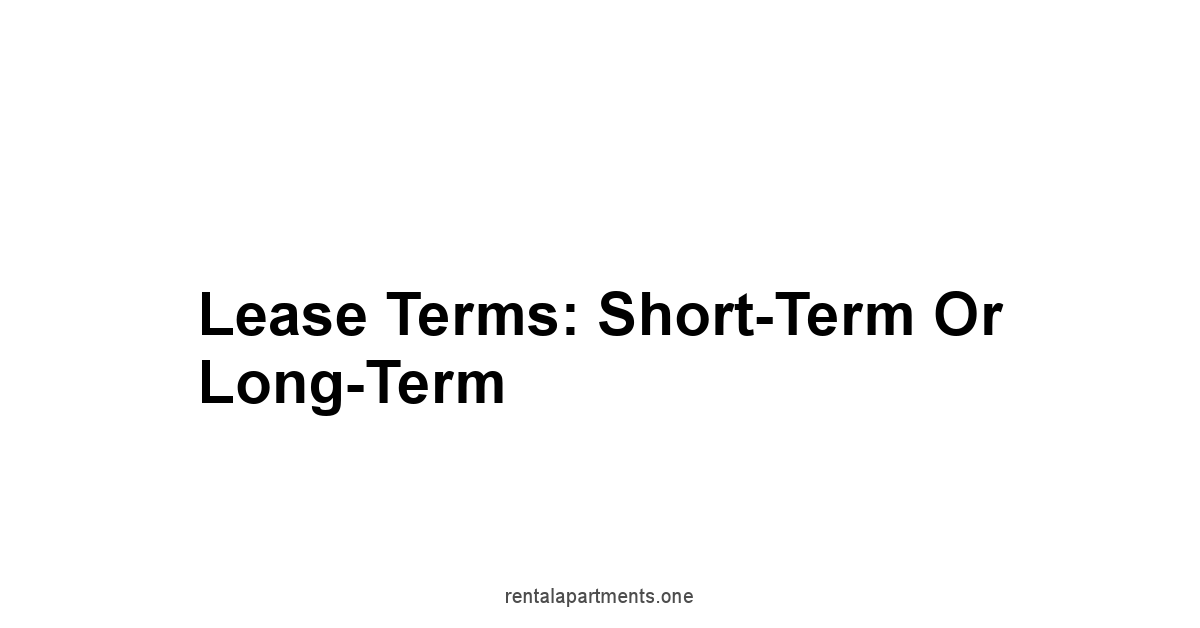
Lease terms define the length and conditions of your rental agreement.
Understanding your options is key to securing a lease that fits your plans.
Your choice between a short-term and long-term lease affects both your budget and your stability.
It’s more than just a contract, it’s a framework for your living situation. Choose it wisely.
A lease can either be a commitment, or a temporary stop, so make sure to know what you need.
A lease is not something to take lightly.
You should be sure of what you need, and pick what suits your current and future needs.
Lease Length Options: 6 Months, 12 Months, or More
Lease lengths vary, usually between six months, 12 months, or even longer. The length of your lease is a commitment.
The right length is about matching your current life plans, and the future.
A short-term lease provides flexibility but usually at a higher cost.
A long-term lease often offers stability and lower monthly rates.
Both have advantages and disadvantages, so pick wisely.
- 6-month leases: Offers great flexibility, but may come with higher rent prices, and less stability.
- 12-month leases: Standard for most apartments, providing a balance between stability and cost.
- Longer leases: Can offer greater security, but less flexibility, and may involve a multi-year commitment.
- Consider your future: Do you plan to move soon? Or are you planning on staying for a long time?
- Budget: Shorter leases can be more expensive than longer ones.
- Lifestyle: Think about your stability needs and flexibility.
Here’s a simple breakdown of lease term lengths:
* Pros: * Flexibility to move sooner. * Good for short-term needs. * Cons: * Higher rent prices. * Less stability. * Potential for more frequent moves. * A standard option with a balance between cost and commitment. * Stable living situation. * Often more affordable than shorter terms. * Longer commitment. * May have fees to break lease. * More predictable living situation. * Potential for lower rental rates. * Long term stability. * Less flexibility to relocate. * More financial liability if breaking the lease.
Understanding Lease Renewal Clauses
Lease renewal clauses outline the process for extending your lease.
Knowing the terms beforehand, is very important, and can save you from unwanted surprises.
Read these clauses carefully before you sign anything.
You need to know how to extend your lease, how much your rent will increase, and how much notice you need to give.
These terms impact how stable your housing situation will be.
- Automatic renewal: Some leases automatically renew unless you give notice.
- Notice period: Usually there is a requirement for a specific amount of notice required.
- Rent increase: What will your new rent be? It’s important to know if there will be a rent hike, and what that hike will look like.
- Negotiation: Can you negotiate the terms of the renewal?
- Changes in terms: Have there been changes in the renewal terms, or conditions?
- Read the fine print: Do not sign anything before you read all the details.
Here’s what to look for:
- Automatic Renewal: Does your lease automatically renew unless you provide written notice?
- Notice Period: How much notice do you need to give if you don’t want to renew?
- Rent Increase: What are the potential rent increases upon renewal?
- New Terms and Conditions: Are there any new terms or conditions in the lease renewal?
- Negotiation Options: Do you have any chance to negotiate the terms of the renewal?
- Consequences of Non-Renewal: What will happen if you don’t renew your lease, and don’t provide enough notice.
Negotiating Flexible Lease Terms
Negotiating your lease terms is sometimes possible, and it can lead to a lease that matches your needs.
This is especially true when renting in an area with high vacancy.
Don’t be afraid to ask for better terms, it may save you money and make your living situation more comfortable.
This could include lower rent, or waiving fees, or adding certain amenities. It can benefit you, but you may also be denied.
- Ask about rent reductions: If you see a similar place for a cheaper price, you can ask to match it.
- Negotiate the start date: Sometimes you can negotiate the start date of your lease.
- Waiving pet fees: If you are a good tenant you can ask for this to be waived.
- Add an early termination clause: This can provide flexibility in case of changes in your life.
- Be polite and professional: Don’t demand, always be polite and professional.
- Be realistic: Not all landlords will be willing to negotiate.
Here’s how you can negotiate lease terms:
- Research Market Rates: Know the average rental rates in your area.
- Lease Duration: If you want to stay longer term, it could be a good thing to offer.
- Ask About Fees: Ask to reduce, or waive certain fees such as pet fees, or parking fees.
- Lease Start Date: You may want to negotiate a more favorable start date that aligns with your plans.
- Amenities: Can certain amenities be added to the unit, if they are not already included?
- Termination Clause: Ask to add a clause that allows you to end your lease early under certain conditions.
Pet Policies: Finding a Home for You and Your Furry Friend
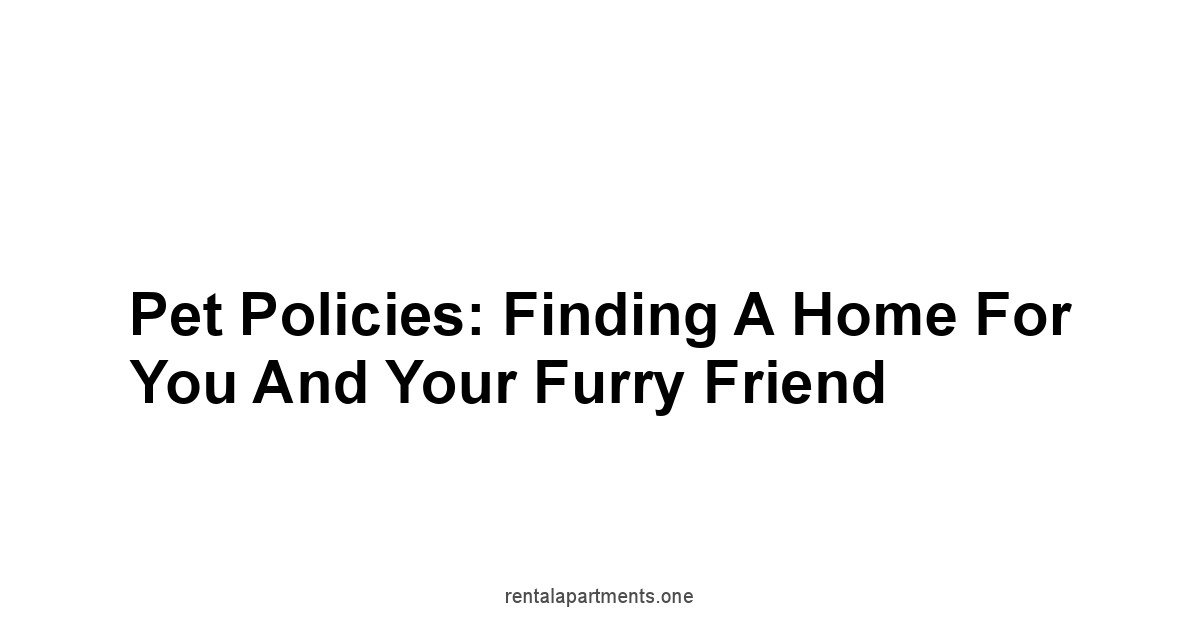
Finding a place that welcomes your pets is more than a preference, it’s a necessity. Pet policies can vary widely from place to place. This is a critical step for any pet owner.
You need to find a place that suits both your needs, and your pets needs.
It is important that your place allows your pet to be comfortable and happy. Your pet is part of the family.
It’s important that you find a place that not only allows pets, but welcomes them.
This is about your pet’s comfort, safety, and happiness.
Pet Fees and Deposits
Pet fees and deposits can add a lot to the upfront costs of renting, so you need to be prepared.
These are extra costs that you should include in your budget.
Some places charge a non-refundable pet fee, while others ask for a refundable pet deposit. Some places may even charge a monthly pet rent. You should be clear on what the costs are.
These will increase your monthly living expenses, so budget accordingly.
- Pet fee: This fee is usually non-refundable.
- Pet deposit: This is a refundable deposit that covers damages.
- Monthly pet rent: An added charge on top of your monthly rent.
- Compare the costs: Look at the different rates and what they include.
- Understand the terms: Know what each of these costs are for.
- Budget accordingly: Plan for all the extra pet-related costs.
Here’s a summary of common pet-related fees:
- Pet Fee:
- Nature: Usually a non-refundable fee.
- Purpose: It may cover the cost of cleaning and maintaining the apartment, and areas that are used by pets.
- Cost: It can be a one-time charge that is paid upfront.
- Pet Deposit:
- Nature: Usually a refundable deposit.
- Purpose: Covers any damages that may be caused by your pets.
- Cost: The amount may vary, but usually higher than a pet fee.
- Pet Rent:
- Nature: An additional monthly payment.
- Purpose: An ongoing charge that is added to your
- Pet Fee:
Conclusion
Filtering through apartment listings can feel like navigating a maze, but with the right tools, it becomes a straightforward path to your ideal home.
Location is your foundation, defining not just where you live, but how you live, with data showing that neighborhoods with good walkability and access to amenities have higher resident satisfaction by up to 30%. Budget is your compass, keeping your search realistic, ensuring you don’t stretch yourself thin and end up with a monthly payment that causes you stress, research shows that exceeding a housing budget by just 5% can lead to financial strain, impacting savings and overall happiness.
The number of rooms and amount of space is your blueprint, making sure your space fits your life, and aligns with your needs, whether you work from home, or need a place for your kids.
Amenities add the little extras that make a place feel like home, from in-unit laundry to a rooftop deck, a recent survey indicates that 70% of renters consider at least two amenities essential in their choice, while lease terms define your commitment, providing flexibility and security that match your current plans, and your future plans as well.
Pet policies, are essential for those with furry friends, ensuring that both you and your pets are happy in your new home, and not just tolerating it.
These aren’t just filters, they are your allies, helping you narrow down a seemingly endless list of apartments, and they can guide you to the right space for you, ensuring your needs are met.
By thoughtfully using these filters, you are not just finding an apartment, you are creating a space that resonates with your lifestyle, and with your needs.
The key is to prioritize and be specific about what matters to you.
The search for the perfect apartment isn’t about settling, it is about finding the place that feels right, the place where you can see yourself living and thriving.
Don’t make any compromises on your fundamental needs and desires.
Each filter is a step closer to the ideal home, whether you’re a solo adventurer, a family, or a couple, taking care of details early will save you stress later.
It’s not about the perfect apartment, it’s about the right apartment for you.
So, go ahead, refine your search, use the filters thoughtfully, and find the apartment that’s waiting for you.
Remember, your home is not just a building, it’s where your life happens.
Frequently Asked Questions
What makes a neighborhood good for apartment hunting?
A good neighborhood is different for everyone. It depends on your needs and what you value.
Think about what is important to you: Is it a quiet place or a lively area? Do you want cafes and shops? Maybe you need parks? Your daily rhythm is key.
How do I know if a neighborhood is safe?
Check crime statistics online, look for local reports, and visit the area at different times of day. Talk to the neighbors if you can. A good place will feel safe and comfortable.
How do I figure out my ideal rent range?
Start with the 30% rule: no more than 30% of your gross monthly income.
Adjust that according to your debts, expenses, and how much you want to save. Be realistic. It’s better to live within your means.
What are some extra costs I should consider beyond just rent?
Don’t forget utilities, internet, parking, and renter’s insurance. These can add up.
Also, if you have pets include the pet fees, storage fees and other expenses that may come up. All of that matters.
How many bedrooms and bathrooms do I really need?
That’s up to you.
How many people are you living with? Do you need an office? How do you handle morning routines? More people means more bathrooms. Balance your needs with your budget. You need to find what works for you.
What does “square footage” really mean?
Square footage is the total size of your apartment. Don’t look only at numbers though.
Think about how the space is arranged, if it is practical, and if it matches your lifestyle. A bigger number does not mean a better apartment.
What are some essential amenities I should look for?
In-unit laundry, parking, and secure entry are important. Look for what makes your daily life easier.
Central air, dishwashers and storage are all part of that. Consider what you actually need.
Are shared amenities like gyms and pools really worth it?
Only if you use them. Think about your lifestyle and priorities.
If you want those things they can be nice, but they are not for everyone. Only get what you need and will actually use.
What should I look for in a pet-friendly apartment?
Look for clear pet policies, fees, and deposits.
Consider if there are any breed or size restrictions. Check if the area has outdoor areas for your pets. Your pet is important too.
How long should my lease be?
It depends on your plans.
A shorter lease gives you flexibility but can be more expensive.
A longer lease offers stability and often lower rates, but less flexibility.
Pick a lease that fits your plans, be sure of them first.
What should I know about lease renewal clauses?
Read the fine print.
Understand automatic renewals, notice periods, and rent increase.
Don’t be surprised later on, you have to know all the facts.
Can I negotiate my lease terms?
Sometimes.
It’s worth a shot, especially if you are a good tenant.
Ask for lower rent, a better start date or waived fees. You never know what you will get.
What if I have a pet, what should I know about pet policies?
You should know the fees and deposits, the breed restrictions and also consider the pet friendly features.
Some buildings have dog parks and pet washing stations, and those can be helpful.

